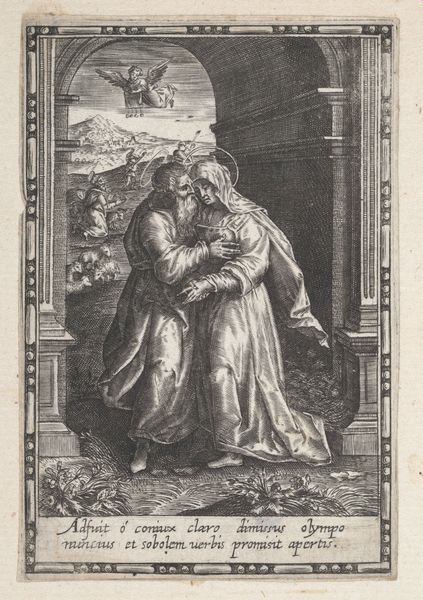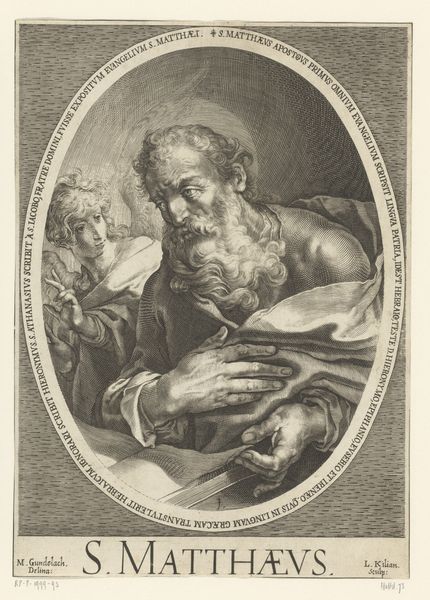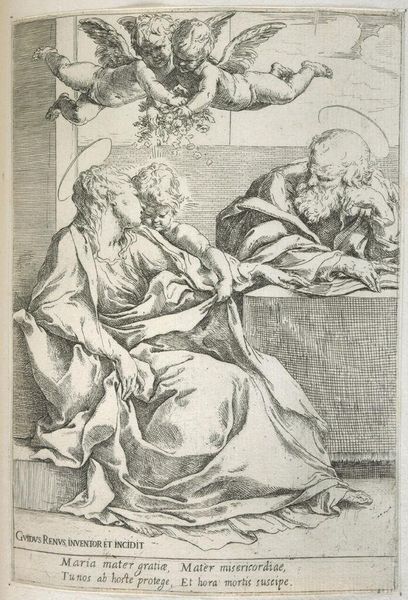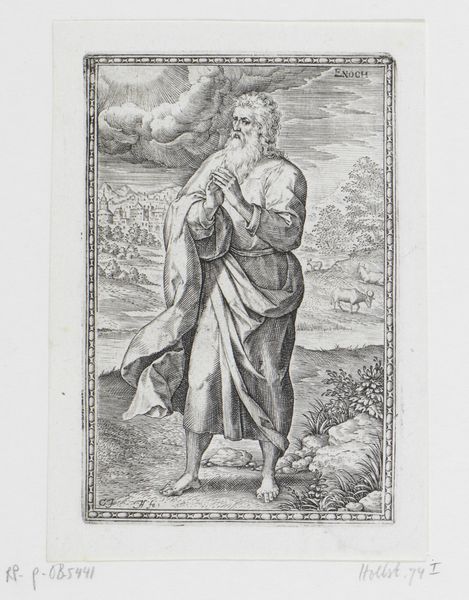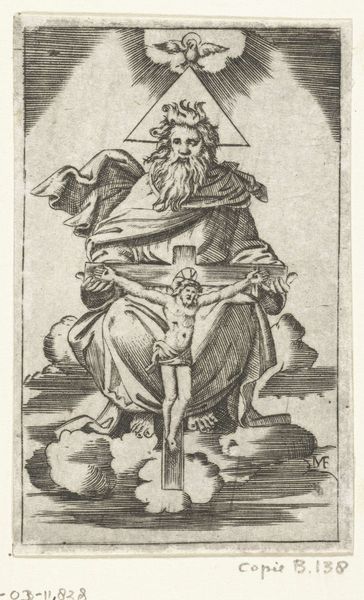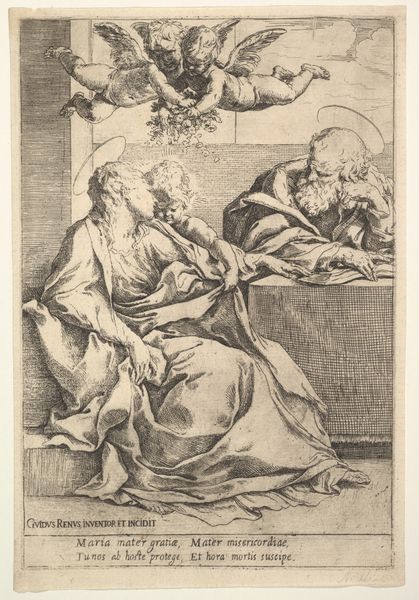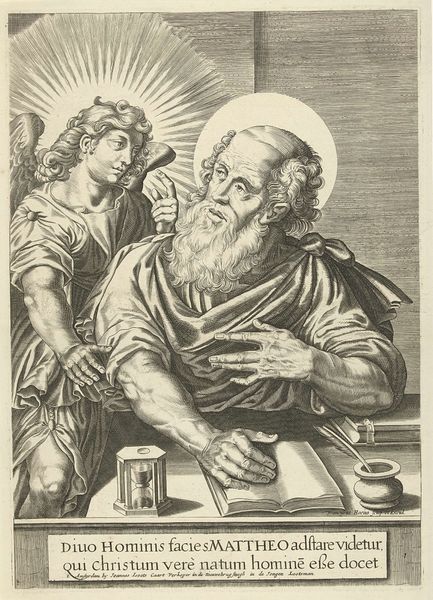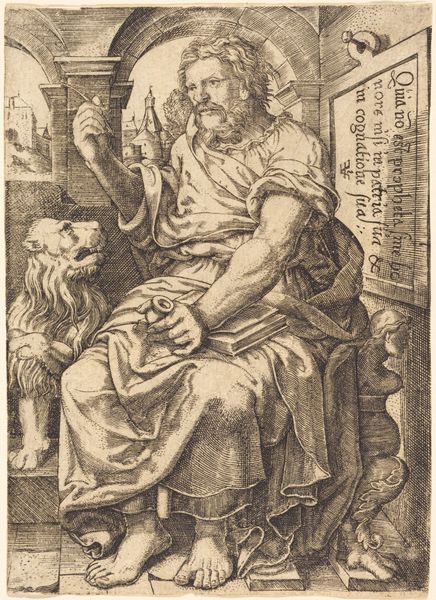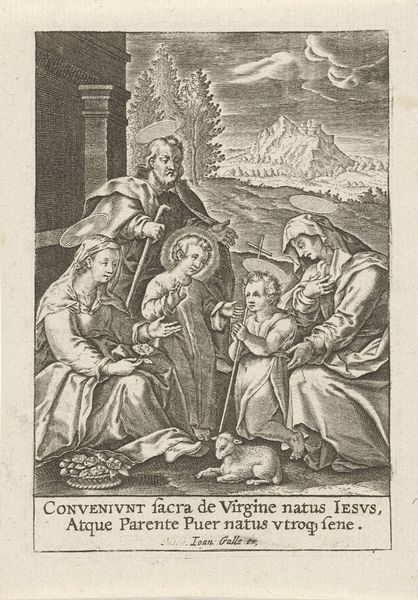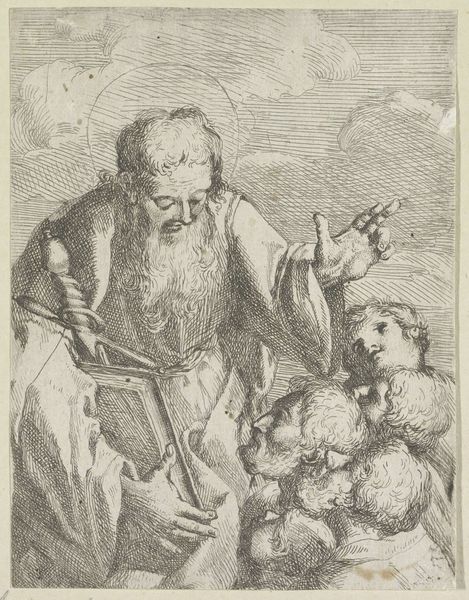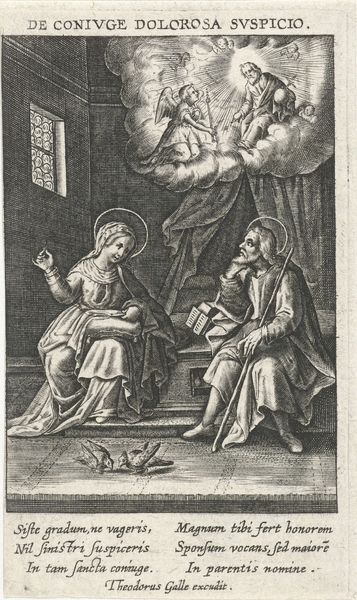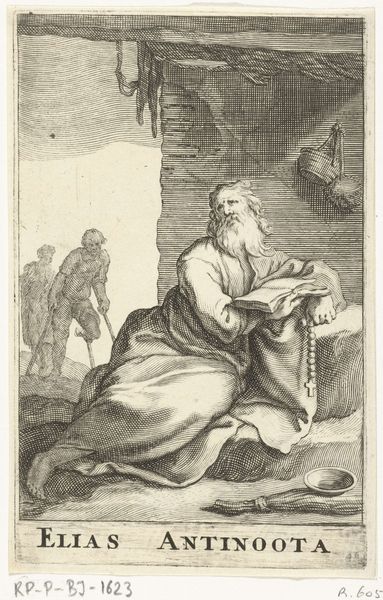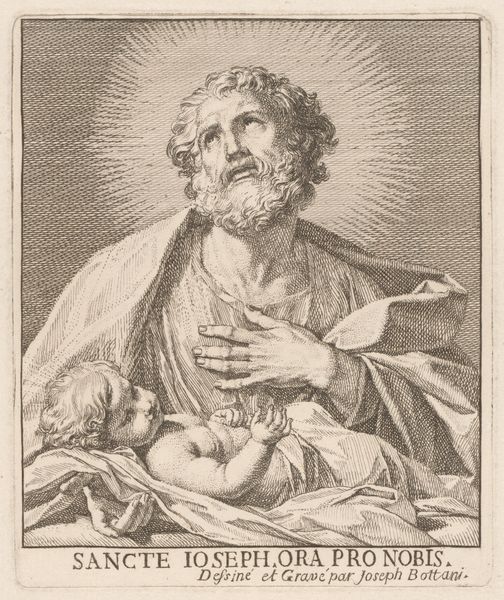
print, engraving
#
portrait
# print
#
old engraving style
#
figuration
#
11_renaissance
#
chiaroscuro
#
line
#
history-painting
#
northern-renaissance
#
engraving
Dimensions: height 146 mm, width 102 mm
Copyright: Rijks Museum: Open Domain
Curator: Let's turn our attention to this engraving by Conrad Goltz, depicting Evangelist Matthew. It's believed to have been made sometime between 1588 and 1592. Editor: My first impression is of a somewhat somber atmosphere. The chiaroscuro technique definitely contributes to this feeling; the intense contrast pulls you right into Matthew's intense gaze. Curator: Yes, the dramatic contrast, achieved through engraving, is striking. Considering printmaking processes of the late 16th century, we have to appreciate the labor involved. Think about the precise cuts into the copper plate, the inking, the pressure of the printing press... This wasn't simply about artistic expression; it was skilled craft and manual labor, a whole social process of production. Editor: Absolutely. And beyond the pure craftsmanship, I see potent symbolism. Matthew, with his quill and book, represents divine inspiration and the recording of sacred texts. The angel, a conventional attribute, serves as both guide and witness. Look at the placement; it hovers just over his shoulder, whispering guidance directly into his ear. This communicates a tangible connection to the divine. Curator: The rendering of the angel is also interesting when thinking of dissemination. The engraving allowed Goltz to share this vision of Saint Matthew with a potentially enormous audience, effectively democratizing religious imagery for those who couldn’t afford painted artworks. Consider how print workshops multiplied images of this quality... Editor: Which surely affected their cultural reception! The image’s ubiquity would have intensified its resonance. Moreover, I find it intriguing how the tools of writing—the quill, ink, book— are staged prominently on the table, further solidifying Matthew's role as the inspired author. The history of the scripture is tied directly to its writing tools and the act of authorship itself. Curator: A lot to consider then! Ultimately, the artwork’s compelling not only as religious iconography, but also as a representation of Northern Renaissance craft and workshop production. Editor: Precisely! The interweaving of craft and sacred significance leaves a lasting impact.
Comments
No comments
Be the first to comment and join the conversation on the ultimate creative platform.
